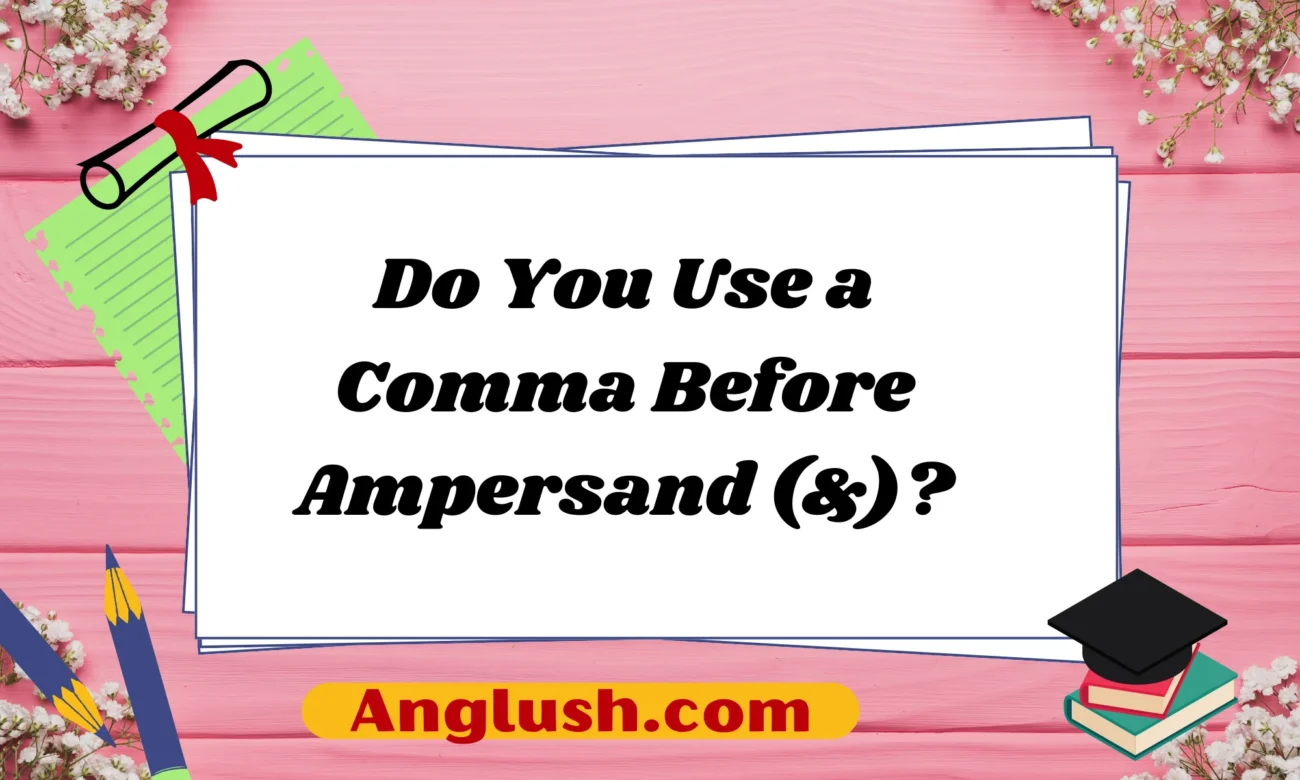Introduction
Punctuation can be tricky, even for experienced writers. One question that often arises is whether to use a comma before an ampersand (&). While ampersands are common in business names, branding, and informal writing, their usage differs from that of the word “and.” This article will explore the rules, exceptions, and stylistic preferences for using a comma before an ampersand.
We’ll also provide clear examples to help you decide when to use a comma, when to avoid it, and how to maintain consistency in your writing.
What Is an Ampersand (&)?
The ampersand (&) is a symbol that represents the word “and.” It originated from a Latin ligature of the letters “e” and “t” (which spell “et,” meaning “and” in Latin). Over time, it evolved into the modern ampersand we use today.
Ampersands are commonly found in:
- Business names (e.g., Barnes & Noble)
- Logos and branding (e.g., Johnson & Johnson)
- Formal citations (e.g., Smith & Brown, 2021)
- Casual and artistic writing
Despite its frequent use, the ampersand is generally avoided in formal writing unless it is part of a proper name.
When Should You Use a Comma Before an Ampersand?
The simple answer is: rarely. However, there are a few cases where a comma before an ampersand might be necessary or acceptable. Let’s explore them.
1. In a Series for Clarity
A comma before an ampersand may be used in a list to improve clarity, especially when multiple elements are involved.
✅ Example:
- We ordered coffee, tea, pastries, & sandwiches.
However, this is an uncommon practice, and most style guides recommend avoiding it. A better option would be:
❌ Avoid:
- We ordered coffee, tea, pastries, & sandwiches.
✅ Better Alternative:
- We ordered coffee, tea, pastries, and sandwiches.
In formal writing, it’s best to spell out “and” instead of using “&.”
2. When Following Standard Comma Rules in Coordinating Conjunctions
Sometimes, a comma might be needed before an ampersand if you are following a conventional grammatical rule, such as inserting a comma before “and” in a compound sentence.
✅ Example:
- She loves to bake, & she also enjoys painting.
However, this is not considered standard. A better way to write this is:
✅ Better Alternative:
- She loves to bake, and she also enjoys painting.
The ampersand is generally unnecessary in normal sentences.
3. In a Business Name That Includes a Serial Comma
Some brand names incorporate commas before an ampersand, though this is rare. For example:
✅ Example:
- Brown, Green, & Co.
This format is often seen in law firms, investment firms, or publishing houses. However, most businesses avoid placing a comma before the ampersand.
When Should You NOT Use a Comma Before an Ampersand?
Most of the time, a comma should not be placed before an ampersand. Let’s go over the common cases where it’s incorrect.
1. In Simple Lists
When listing items, you should avoid adding a comma before an ampersand.
❌ Incorrect:
- We visited New York, Los Angeles, & Chicago.
✅ Correct:
- We visited New York, Los Angeles & Chicago.
Better yet, in formal writing, avoid the ampersand entirely:
✅ Best Practice:
- We visited New York, Los Angeles, and Chicago.
2. In a Compound Sentence
Ampersands should not replace “and” in regular sentences, and a comma is unnecessary before them.
❌ Incorrect:
- She studied all night, & she finally understood the concept.
✅ Correct:
- She studied all night, and she finally understood the concept.
3. In Formal Writing
The ampersand is often considered too casual for academic, legal, or business writing. Always use “and” instead of “&” unless it is part of an official name.
❌ Avoid:
- We are pleased to announce our new partnership with Johnson & Johnson, & we look forward to future collaborations.
✅ Better:
- We are pleased to announce our new partnership with Johnson & Johnson, and we look forward to future collaborations.
Ampersand Usage in Different Writing Styles
1. Academic Writing
- Avoid using ampersands unless in citations.
- Example: (Smith & Brown, 2021)
2. Business and Legal Writing
- Use ampersands only in official names.
- Example: Hampton, Rogers & Co.
3. Casual Writing and Texting
- Ampersands are fine for informal messages.
- Example: “I’ll bring chips & dip.”
10 Texting Examples with Ampersands
When texting or messaging casually, ampersands are commonly used. Here are some user-friendly examples:
- “Hey, are we meeting at 5 & grabbing dinner after?”
- “Coffee & donuts sound great!”
- “Let’s watch a movie & chill.”
- “Work was crazy today & I’m exhausted.”
- “I’ll pick you up at 7 & we can head out.”
- “Need anything from the store? Milk & eggs?”
- “It’s raining & I forgot my umbrella!”
- “Studying all night & still not ready for the test!”
- “She’s my best friend & my sister at heart.”
- “Movie night? Popcorn & drinks are on me!”
These examples highlight how ampersands are often used in casual communication but rarely in formal writing.
Final Thoughts: Should You Use a Comma Before an Ampersand?
In most cases, a comma before an ampersand is unnecessary. The ampersand itself is already a replacement for “and,” so adding a comma usually doesn’t improve readability.
Quick Recap:
✅ Use a comma before an ampersand only in special cases (e.g., some business names).
❌ Avoid using ampersands in formal writing unless they are part of a proper name.
✅ Use ampersands freely in casual texting, but a comma before it is usually unnecessary.
When in doubt, it’s best to stick with “and” instead of “&” in professional and formal writing.

